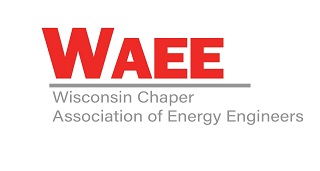
Whether it’s your company’s sustainability goals, or efforts to comply with ever-increasing mandates, the reasons to explore electrifying your fleet vehicles are increasing daily. For many organizations, one of the biggest obstacles to beginning the process is understanding and developing the charging infrastructure to support an electric fleet.
While it can be complicated, it doesn’t have to be worrisome. An experienced energy consultant can provide the expertise and guidance to help you successfully transition your fleet to electric vehicles (EVs) and determine if the use of distributed energy resources (DERs) is right for your business. DERs are equipment and systems that generate and/or store power for local consumption using alternate energy sources.
Examples of Distributed Energy Resources
Examples of DERs include solar PV systems, battery energy storage systems (BESS), wind turbines, hydrogen fuel cells, generators and microturbines. They can be stand-alone sources or connected to the utility grid. Overall, they can be used to supplement power from the utility to lower financial impacts on your utility bill, increase sustainability and create resiliency in the event of a power outage from the local grid. Think of DERs as mini power plants that can reside at your facility or business.
Benefits of Transitioning to Electric Fleet Vehicles
Like any major business decision, there are both benefits and challenges to incorporating EVs into your fleet. First, let’s look at the advantages:
- Environmental impact—Many companies have established sustainability goals. Converting your fleet from gas to electric vehicles reduces carbon emissions in most areas. Using DERs to support electric vehicles can help you make more significant progress toward those goals.
- Grants and tax incentives—There are currently a number of grants and incentives available for both purchasing electric vehicles and the electrical infrastructure necessary to support EVs.
- Long-term operating costs—With significantly fewer “moving parts” in an EV, they can be less expensive to maintain than standard internal combustion engine (ICE) vehicles. It can also cost far less to “fuel” your EV using electricity and DERs, compared to diesel or gasoline.
Challenges Associated with Switching to EVs
A realistic review of incorporating electric vehicles into your fleet should also address challenges associated with EVs, such as:
- Capital investment—Electric vehicles can be more expensive than their gas or diesel-powered counterparts. Developing the charging infrastructure also requires an investment of both time and money.
- Route Requirements—It’s important to consider what the driving distance expectations are for your fleet vehicles; how far they can travel on a charge and the time it takes to recharge them between routes.
- Resilience—If there is a power outage and the local utility is down, how will you keep your fleet charged and operational?
Distributed energy resources can help you overcome some of these challenges and bring the advantages of electric fleets to life.
Distributed Energy Resources
 DERs are equipment or systems that generate power for local consumption using alternate energy sources. In simple terms, DERs create redundancies within the regional energy grid that reduce the risk of power outages.
DERs are equipment or systems that generate power for local consumption using alternate energy sources. In simple terms, DERs create redundancies within the regional energy grid that reduce the risk of power outages.
In addition, DERs can also be used to supplement power use and minimize the financial and energy impact of adding electric vehicles to your business fleet.
For example, as you add EVs to your fleet, you will need to install charging stations and the electrical infrastructure to charge the vehicle batteries. Electric fleet charging on the grid often leads to higher peak and demand charges. In some cases, the grid may not be able to support your EV fleet charging needs. The solution lies in leveraging DERs.
Adding DERs for Less
By incorporating a solar and BESS microgrid into your charging infrastructure, you can charge your vehicles using clean renewable energy and store excess power in a battery to be used when utility rates are high or solar is not available. This approach comes with many benefits:
- If you charge most of the BESS using solar, you can take advantage of a solar investment tax credit (ITC) program that allows you to deduct a percentage of the cost of installing the solar energy system and battery from your federal taxes, as well as utilize accelerated depreciation to compress five years of depreciation into one year.
- In some areas, additional grants and incentives may be available to further offset the capital investment.
- Make progress toward reducing or eliminating your corporate carbon footprint.
- Lower your utility costs, as not as much electricity will be pulled from the grid to support vehicle charging and you can utilize the battery when utility costs are the highest.
Distributed energy resources make your EV charging system more reliable, resilient, cost efficient and sustainable.
Contact EnTech Solutions at 920-225-6737 or [email protected] if you’d like more information about EV charging for your vehicle fleet.
You may also be interested in reading my other blog covering Seven Tips for a Successful Fleet EV Transition.
Thank you for checking out the EnTech Solutions blog. To stay up to date with technologies, developments and trends about clean energy, please subscribe.








